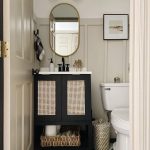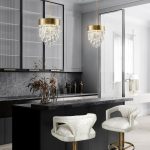
Scandinavian design has become increasingly popular in recent years, thanks to its emphasis on simplicity, functionality and aesthetics. This design style originated in the Nordic countries, mainly Denmark, Sweden, Norway and Finland. It is characterized by clean lines, minimalism, and a muted color palette. Furthermore, Scandinavian design is recognized for its eco-friendliness and ethical manufacturing processes.
The Origins of Scandinavian Design
Scandinavian design emerged in the 1950s, post the Second World War, when the Nordic countries needed to rebuild their economies. Unlike their European counterparts, the Nordic countries lacked natural resources, which gave rise to a focus on innovation and creativity. The result was functional and aesthetic design, which relied on simplicity, functionality, and the use of natural materials.
The Key Features of Scandinavian Design
The minimalist and understated style of Scandinavian design is reflected in its key features. Here are a few of its hallmark characteristics:
Functionality
Scandinavian design is synonymous with beautiful yet functional pieces. Furniture, for example, is designed with a purpose, often featuring clean lines and sleek curves to maximize space.
Simplicity
The less is more approach of Scandinavian design is evident in its use of uncomplicated shapes and forms, textures, and natural materials. The idea is to create a tranquil atmosphere without overwhelming the senses.
Hygge
A concept that exemplifies Scandinavian design is hygge- a Danish word that translates to coziness, warmth, and comfort. Hygge is all about feeling content and safe through small moments of happiness, which Scandinavian design achieves through comfortable furnishings and calming decorative elements.
Scandinavian Design: Past and Present
Although Scandinavian design is renowned for its minimalism, it has evolved over time. With advancements in technology and sustainable production, modern Scandinavian design has become more accessible and inclusive. Scandinavian-style furnishings with vibrant colors and playful patterns have become popular in recent years, offering a new twist on its traditional minimalism.
The Benefits of Scandinavian Design
There are several benefits to incorporating Scandinavian design into your home. Here are a few reasons why:
Eco-Friendliness
Scandinavian design emphasizes eco-friendliness by prioritizing natural materials, energy-efficient lighting, and sustainable production practices, promoting ethical consumption.
Comfort
Scandinavian design promotes comfort through ergonomic and functional furniture that maximizes space and offers solace after a stressful day without sacrificing beauty.
Visual Appeal
Scandinavian design is incredibly visually appealing, thanks to its understated yet sophisticated aeschetic. The muted color palette and clean-lined furniture make it easy to integrate into any home.







